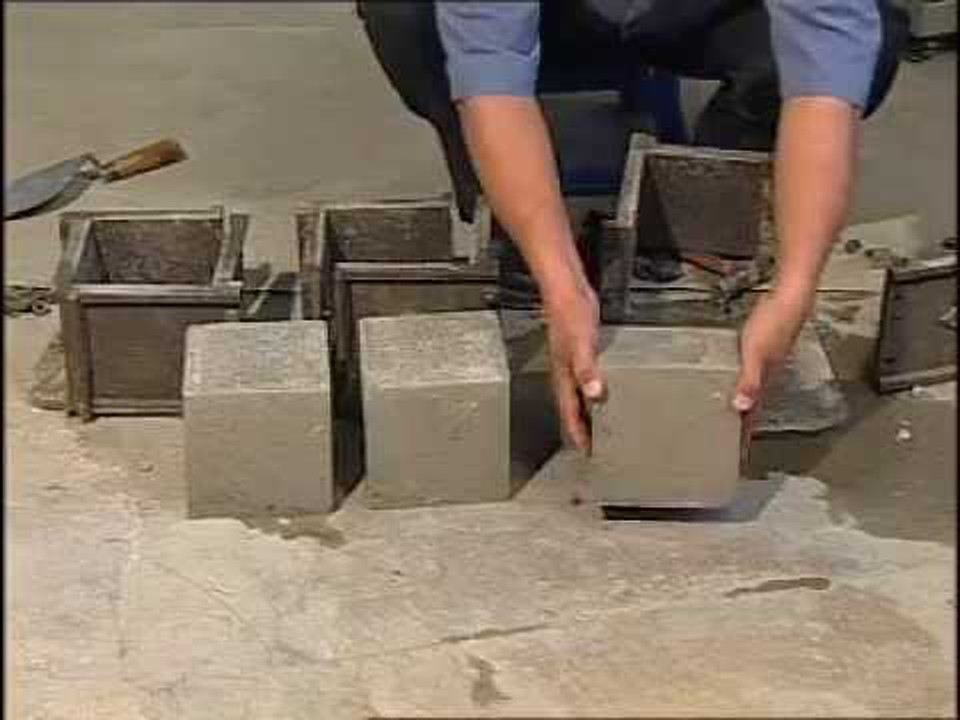compressive strength of concrete cube test
All concrete in the works shall be of design mix as defined in IS 456: 2000, unless it is a nominal mix concrete.
It shall be very clearly understood that whenever the class of concrete such as M 20 is specified it shall be the engineer responsibility to ensure that minimum crushing strength as per the for the respective class of concrete . The maximum total quantity of aggregate per 50 Kg of cement shall not exceed 450 Kg except when otherwise specifically approved by Engineer.
Define cement plaster |Methods and Measurement of cement plaster
To get the particular grade of concrete particular water cement ratio, workability and amount of strength required to get the minimum strength specified, the proportions of the mix is determined by two ways weight and volume. Aggregate proportions adjusted due to moisture present in the aggregate shall be made. Concrete Mix proportion is to be made according to Indian Standard Specifications.
The source of water dosage/admixture dosage should be from controlled devices and not to be added manually.
Whenever there is a change either in required strength of concrete or water cement ratio or workability or the source of Aggregates and/or cement, initial tests shall be done to determine the changed proportions, of the mix to suit the altered conditions.
While fixing the value for water cement ratio for initial mixes, backing may be derived from the graph which is formed (appendix IS 456 demonstrating the connection between the 28 day compressive strengths of concrete mixes with various water cement ratios and the 7 day compressive strengths of concrete as per IS 269.
Cube test of concrete| cube test of concrete procedure
cube Test specimens is to be done with at least two different water/cement ratios for each class of concrete, consistent with workability required for the nature of the work to be executed . The materials and proportions used in making intial tests shall be similar in all respects to those to be actually employed in the works as the object of these tests is to decide the extents of cement, aggregates and water important to deliver concrete of required consistency and to give the specified strength.
All the Materials used in concrete shall be brought to the room temperature and all materials shall be in a dry condition. The quantities of cement, aggregates and water for each mix are to be determined by weight/volume.
Mixing shall be done by a mixer machine weigh batcher as per IS 456-2000 in such a manner as to avoid loss of water.The cement and fine aggregate shall first be blended dry until the blend is uniform in colour. The coarse aggregate shall then be added, mixed and water added and mixed thoroughly for a period of not less than 3 minutes until the resulting concrete is uniform in appearance. Each mix of concrete shall be of such a quantity as to leave about 10% excess concrete after moulding the desired number of test specimens.
The consistency of each mix of concrete shall be measured immediately after mixing, by the slump test as per IS 1199. During the slump test, it is tp care to ensure that no water or other materials is lost, the materials used for the slump test may be remixed with the reminder of the concrete for making the specimen test cubes.
Compression tests of concrete cubes shall be made as per IS 456-2000 on 15 cm cubes. Each mould shall be provided with a metal base having a plane surface. The base plate is attached to the mould by springs or screws. The parts of the mould when assembled shall be positively and rigidly held together. Before placing, the concrete cube mould is cleaned and oiled. Then concrete is placed in the cube mould.
The dimensions and internal faces of the mould shall be accurate within the following limits:
Height and distance between the opposite faces of the mould shall be of specified size plus minus 0.2mm. The angle between the adjacent internal faces and between internal faces and top and bottom planes of mould shall be 90 Deg. plus/minus 5 Deg. The interior faces of the mould shall be plane surfaces with a permissible variation 0.03mm.
Concrete test cubes shall be moulded by placing fresh concrete in the mould and compacted as specified in IS 456-2000.
Curing shall be as specified in IS 456-2000. The cubes shall be kept in moist air of at least 90% relative humidity at a temperature of 27 Deg. Cent. Plus minus two Deg. Cent. For 24 hours plus minus half hour from the time of adding water to the dry ingredients. Thereafter they shall be removed from the moulds, kept immersed in clean fresh water, and kept at 27 Deg. Cent. Plus minus 2 Deg. Cent. Temp. Until required for test. Curing water shall be renewed every seven days.
Testing of Concrete Cube specimens
The strength of Concrete Cube specimens shall be determined by not less than five cubes test specimens for each age and each water cement ratio. All these laboratory test results shall be tabulated and should give minimum compressive strength of 15cm cubes at 7 days or 28 days.

MINIMUM COMPRESSIVE STRENGTH OF 15 CM CUBES AT 7 AND 28 DAYS AFTER MIXING, CONDUCTED IN ACCORDANCE WITH IS 516 –

If you have any query on our article compressive strength of concrete cube test. Come up with your comments or you can also connect with me – Vivek Mishra
Leave a Reply